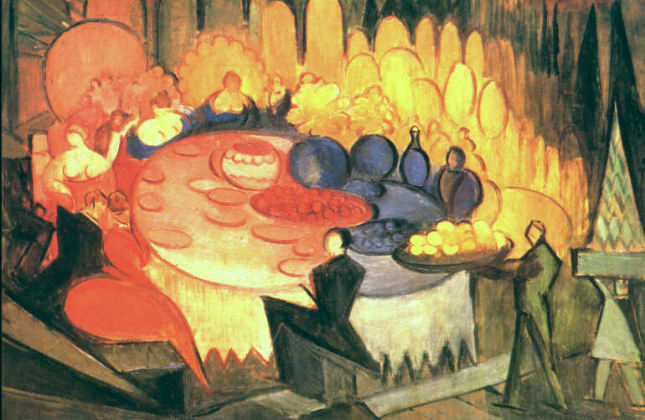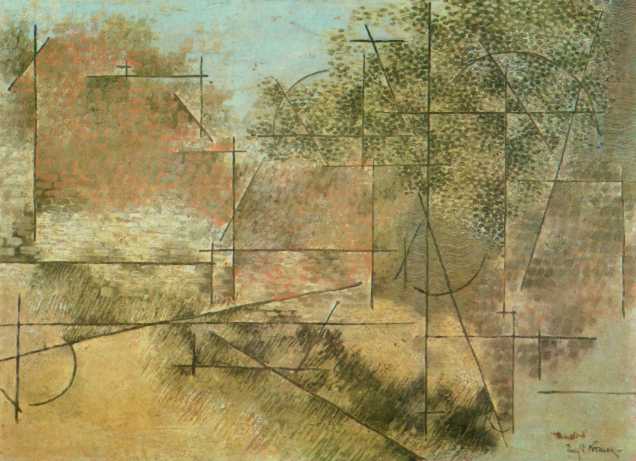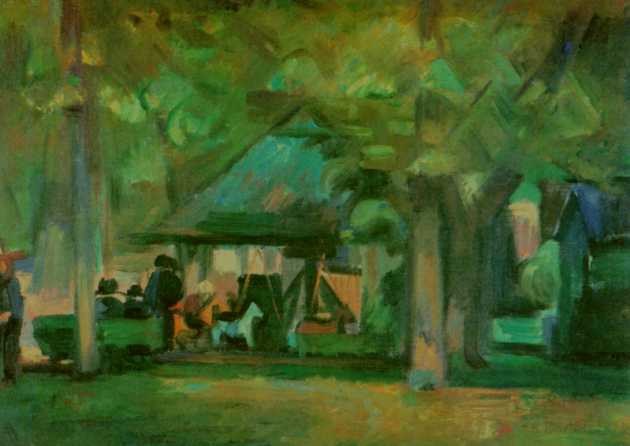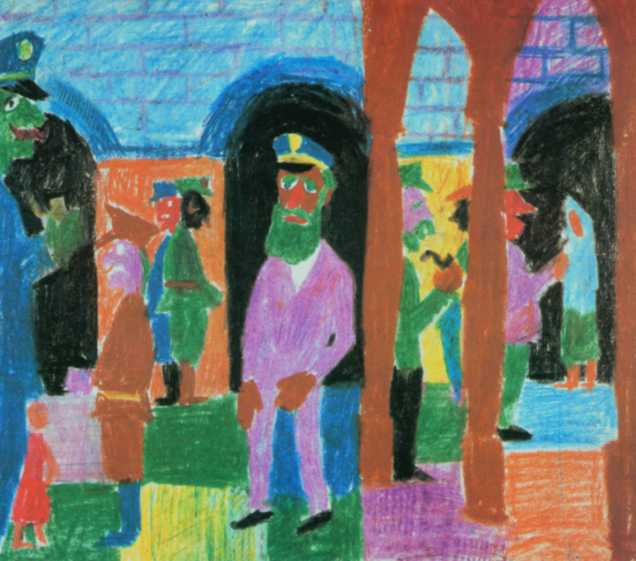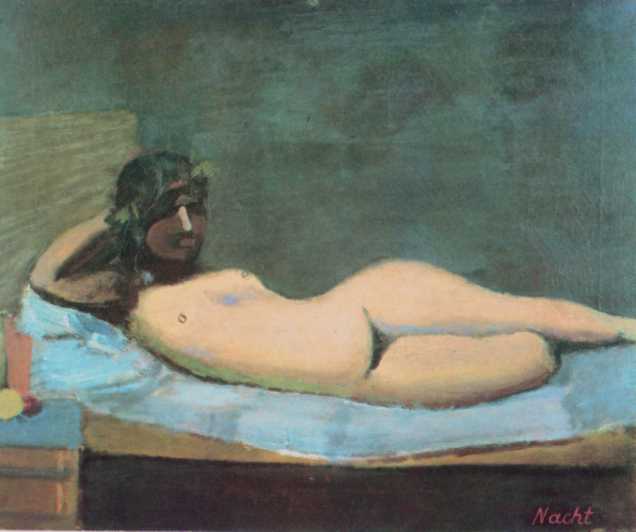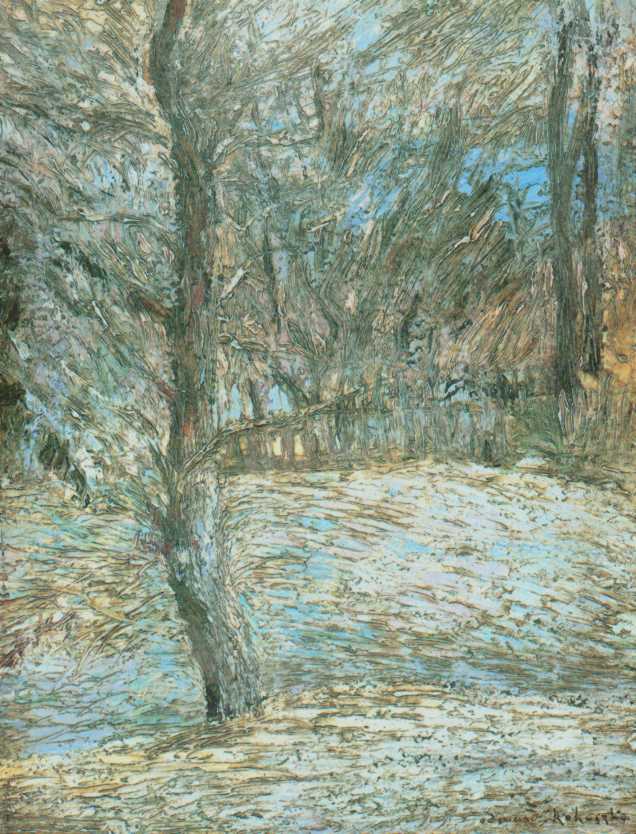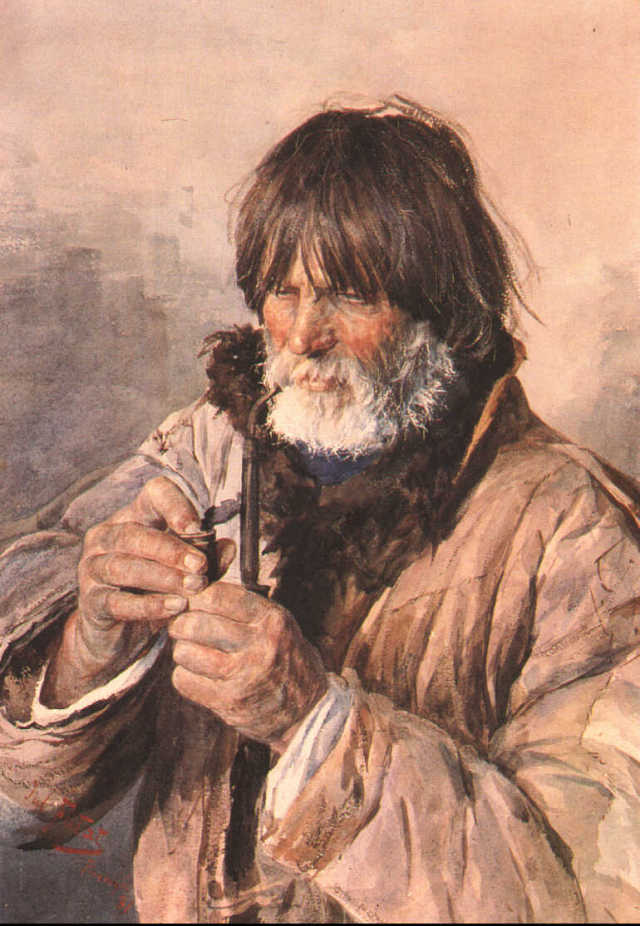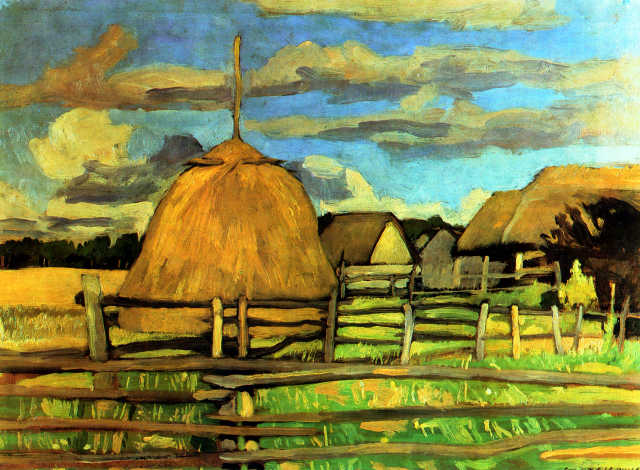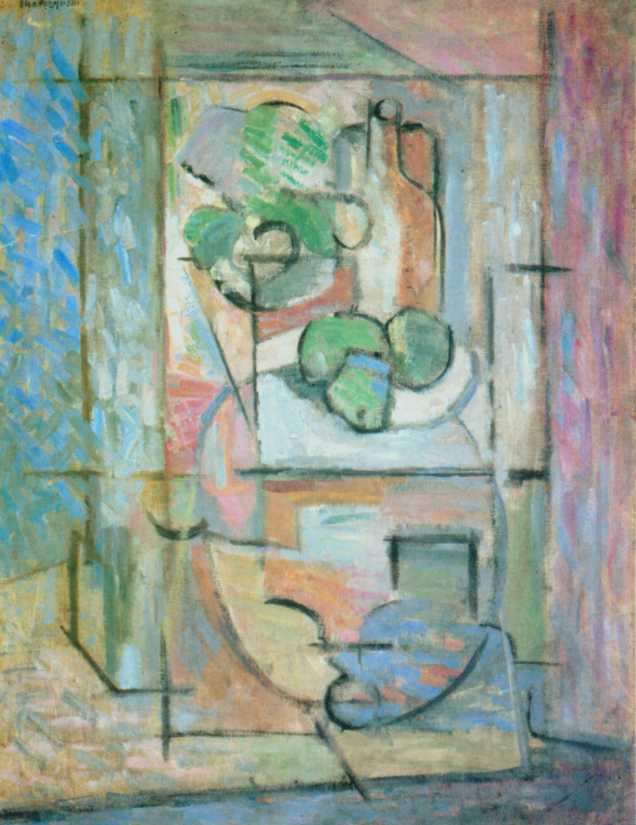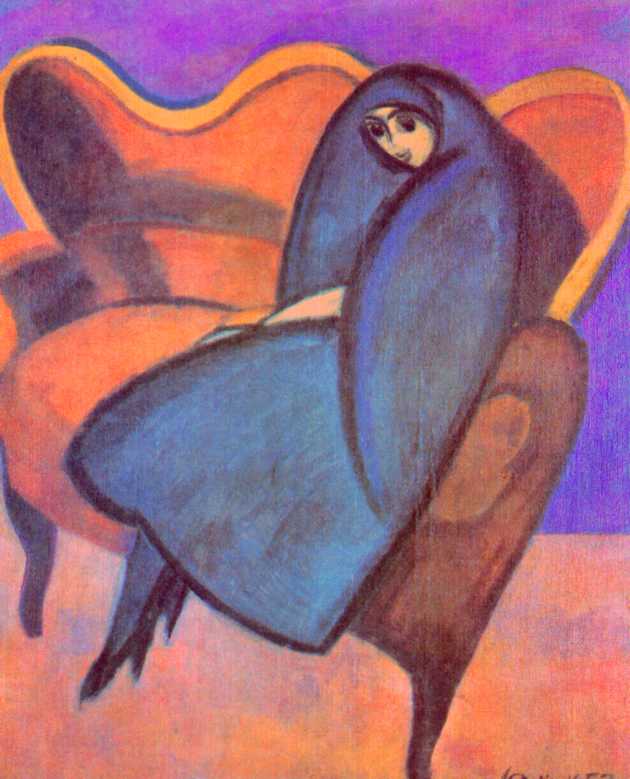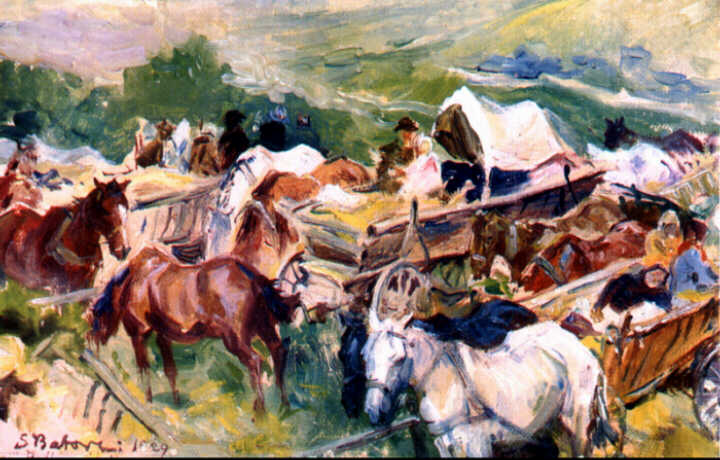Whistle Leon (ur. 1884 Cracow, zm. 1944 Barwisze k. Moscow).
Philosopher, mathematician, art theorist, painter, founding member of the Formist group.
He studied at the Jagiellonian University, where in 1906 he obtained a doctorate in philosophy, a w 1928 habilitated in mathematical logic. In the meantime, he completed his philosophical studies in Göttingen. From 1906 was through 20 for years he was a teacher of mathematics in a gymnasium, from 1922 he lectured at the Jagiellonian University, and from 1930 do 1941 he led the chair of mathematical logic at the University of Lviv. For some time (probably approx. 1902-1904 as a free listener) studied at the Academy of Fine Arts in Kraków under the supervision of J.. Mehoffera. W 1910 he was in Vienna; in years 1913-1914 he stayed in Paris studying drawing and getting to know the work of cubists. Beginning with his debut in 1917 at the first Formist exhibition in Krakow, he participated in almost all of the group's exhibitions, of which he was also a leading theorist. At that time, he created compositions close to Italian futurism. His nudes, portraits, figural compositions, landscapes and views of fantastic cities had a carefully thought-out structure with simplified and strongly geometric forms. W 1922 began to formulate his own “mathematical” painting theory, the so-called. zonism, according to which it belongs “divide the field of view according to the quality of the shapes, colors, the pace of events, etc.” He put these assumptions into practice by creating pictures, in which zones of related shapes and colors merge into one another. Beginning with that published in 1918 in the weekly “Even” of the work entitled. The multiplicity of realities in art He has published many theoretical articles and critical studies like this in art magazines, as well as in the daily press.
Philosopher, mathematician, art theorist, painter, founding member of the Formist group.
He studied at the Jagiellonian University, where in 1906 he obtained a doctorate in philosophy, a w 1928 habilitated in mathematical logic. In the meantime, he completed his philosophical studies in Göttingen. From 1906 was through 20 for years he was a teacher of mathematics in a gymnasium, from 1922 he lectured at the Jagiellonian University, and from 1930 do 1941 he led the chair of mathematical logic at the University of Lviv. For some time (probably approx. 1902-1904 as a free listener) studied at the Academy of Fine Arts in Kraków under the supervision of J.. Mehoffera. W 1910 he was in Vienna; in years 1913-1914 he stayed in Paris studying drawing and getting to know the work of cubists. Beginning with his debut in 1917 at the first Formist exhibition in Krakow, he participated in almost all of the group's exhibitions, of which he was also a leading theorist. At that time, he created compositions close to Italian futurism. His nudes, portraits, figural compositions, landscapes and views of fantastic cities had a carefully thought-out structure with simplified and strongly geometric forms. W 1922 began to formulate his own “mathematical” painting theory, the so-called. zonism, according to which it belongs “divide the field of view according to the quality of the shapes, colors, the pace of events, etc.” He put these assumptions into practice by creating pictures, in which zones of related shapes and colors merge into one another. Beginning with that published in 1918 in the weekly “Even” of the work entitled. The multiplicity of realities in art He has published many theoretical articles and critical studies like this in art magazines, as well as in the daily press.
Łódź
oil, cardboard, 95 x 70 cm;
National Museum in Krakow;
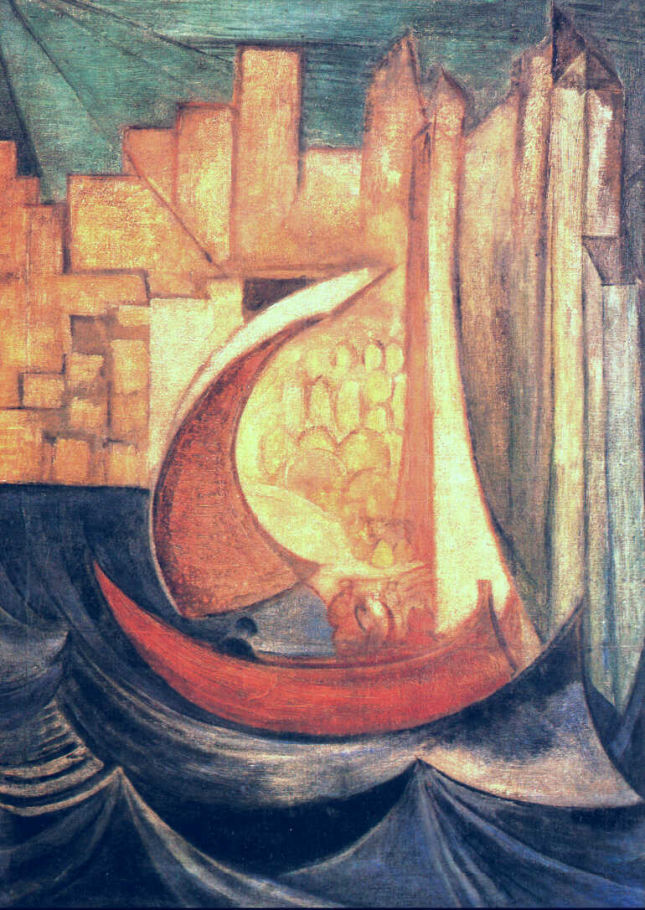
oil, cardboard, 95 x 70 cm;
National Museum in Krakow;

City
oil, cardboard, 100 x 70 cm;
National Museum in Krakow;
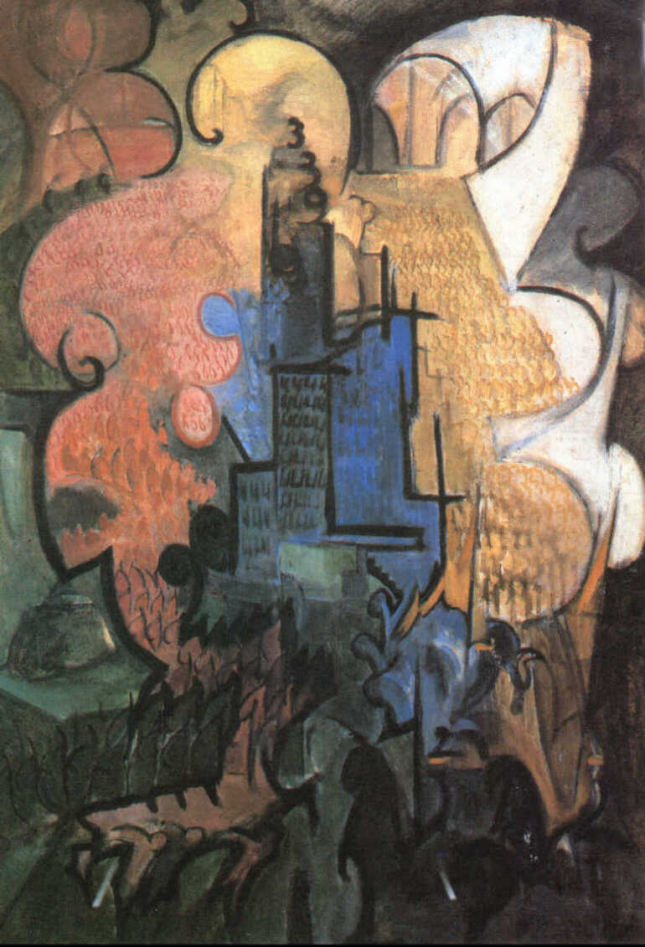
oil, cardboard, 100 x 70 cm;
National Museum in Krakow;

Blue glass
oil, plate, 59 x 46 cm;
private property;
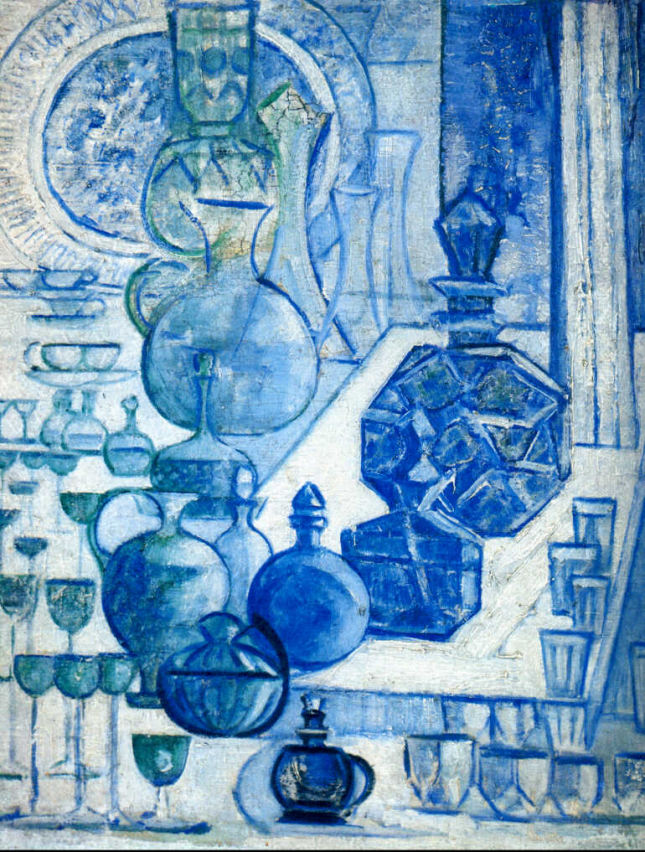
oil, plate, 59 x 46 cm;
private property;

Feast
oil, cardboard, 69 x 102 cm;
National Museum in Warsaw;
oil, cardboard, 69 x 102 cm;
National Museum in Warsaw;
